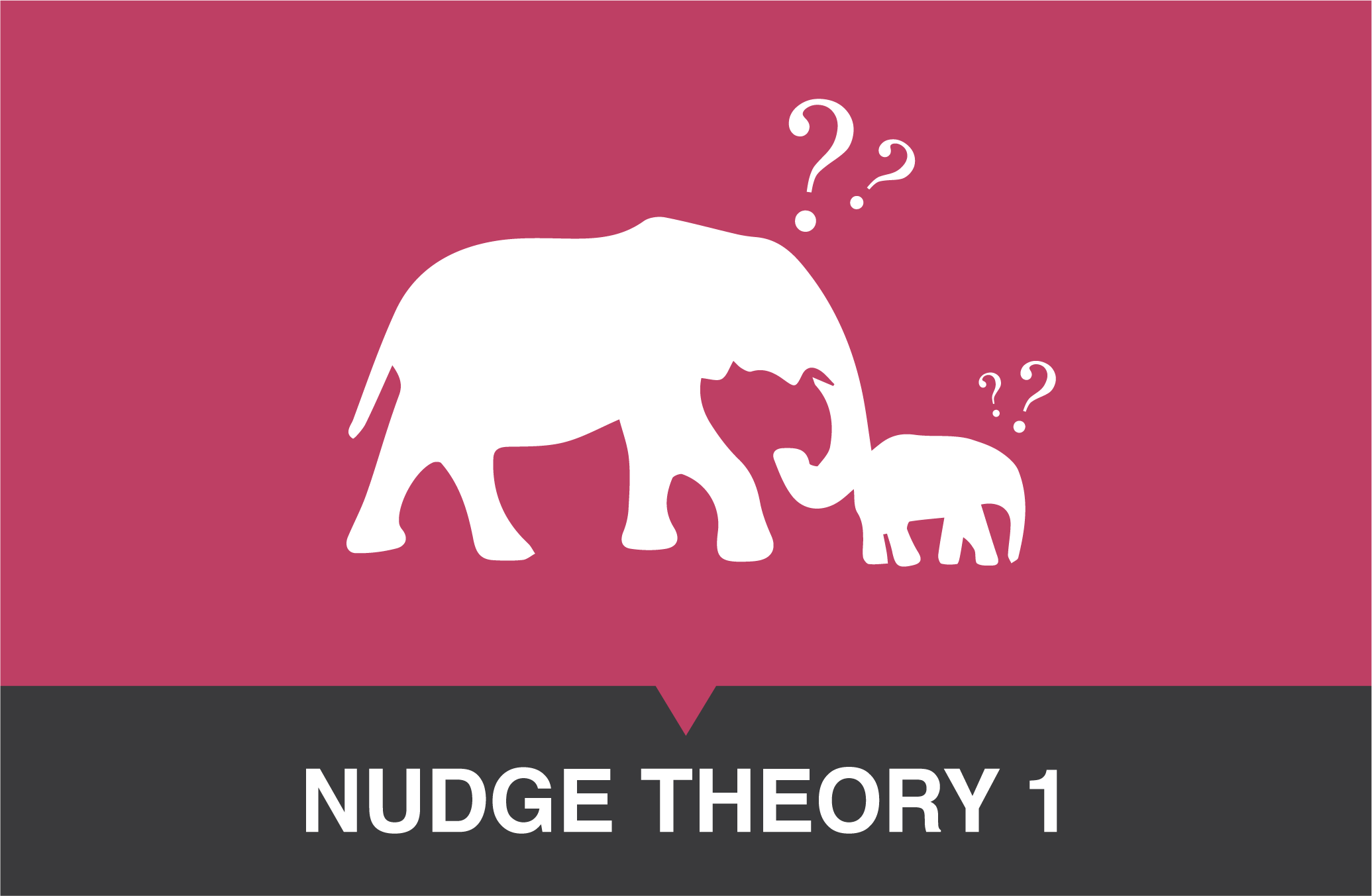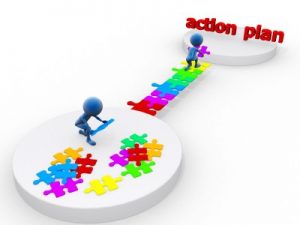
Nudge Theory
Nudge theory comprises a truly hybrid approach to influencing human behavior, rooted in the disciplines of Behavioral Economics, Psychology and Political Theory. In this post we want to take a short look at how the brain works and how the way we process information influences our decisions and behavior.
In Two Minds
 Let’s start by thinking about all the little things you do or don’t do during a day. How much of it do you actually control directly? That is, how much of your behavior is actually caused by conscious decision making followed by an experience of control?
Let’s start by thinking about all the little things you do or don’t do during a day. How much of it do you actually control directly? That is, how much of your behavior is actually caused by conscious decision making followed by an experience of control?
An odd question perhaps, if you don’t control your actions, then who does? The answer requires us to think about behavior in a new way. On reflection you might find some aspects of your life that you only control partly, like getting up at a certain time in the morning, going to the gym regularly and keeping up with your dietary goals. Some actions are more than hard to keep up with, they simply seem to happen outside your awareness entirely; like the bodily motions required to ride your bike to work or you looking left and right before crossing a street. You may recall doing these things, you may even have been aware of them on reflection, but you probably didn’t pay much attention to them while you actually carried them out.
In Psychology this phenomenon, where some actions seem to happen outside conscious control whereas we are fully aware of other, has come to be known as Dual Process Theory (DPT). DPT is the foundation of nudge, because it explains what happens when we act unaware. At the same time provides us with tools to either make that action salient to ourselves, or change the context so we choose something better without thinking about it.
The first and most important aspect of DPT is that our brain works in two different ways, usually at the same time and these two ways are handled by different parts of the brain. One is called the automatic system and the other is called the reflective system. These two ways reflect different processes, different ways of handling information and forming responses.
The Two Systems
The automatic system takes care of most of our behavior for us. It´s fast, unconscious, able to think in parallel (meaning that it can handle many processes at the same time), associative (it bundles things together that seem similar) and it does it all dirt cheap in terms of energy consumption.
The reflective system is almost exactly opposite. It´s slow, conscious, serial (meaning that only one process can take place at any time), analytic and consumes a lot of energy.
The reflective system works by creating hypotheses and testing these with prior knowledge while sorting between relevant and irrelevant bits and pieces of information. You can activate this system by will, and it resembles what we typically associate with thinking in many ways. The reflective system is active whenever you´re asked to complete a puzzle, figure out where to go out on a Saturday evening or just faced with how much you want to pay for a house. When we use our reflective system we´re in control of the process, we can follow the steps we take and would be able to explain them very clearly to a bystander.
Although this might seem superior to the automatic system, it really isn’t. The reflective system is simply too slow and too single minded to handle even a fraction of the alternatives we are faced with every day. Luckily we still have the automatic system, and it shines in handling thousands of problems and alternatives for us without even bothering us with the outcomes.
You can test this yourself. Sit down and think back on the day you´ve had and all the unconscious behavior you´ve displayed. You got out of bed in a certain way, brushed your teeth for certain duration, you chose both the contents and the size of your breakfast very casually. These are among all the little things we usually pay no mind but simply just do day after day, but the consequences of all this personal behavior still play a major role in your health, wealth and happiness, especially if some of it is repeatedly done wrong. When we say that your automatic behavior can be “wrong”, we simply mean that it conflicts with the goals and wishes of our reflected long (and sometimes even short) term preferences, often without us being fully aware of this.
 Luckily, the two systems work together, at least most of the time. This cooperation happens all the time, with the automatic system scanning our surroundings and continuously forming initial responses to the various decision problems that we face. Whenever it encounter something rare, odd, potentially dangerous or a preestablished pattern dictated by the refletive system, it calls on the reflective processes to analyze what´s going on and form a response. If the situation appears ordinary we simply go with the automatic systems response, if not, the reflective system suppresses that response and forms a better one.
Luckily, the two systems work together, at least most of the time. This cooperation happens all the time, with the automatic system scanning our surroundings and continuously forming initial responses to the various decision problems that we face. Whenever it encounter something rare, odd, potentially dangerous or a preestablished pattern dictated by the refletive system, it calls on the reflective processes to analyze what´s going on and form a response. If the situation appears ordinary we simply go with the automatic systems response, if not, the reflective system suppresses that response and forms a better one.
We are able to consciously call upon the reflective system, for instance if we are told that our habits are bad for us, thereby creating a mental note that the automatic system responds to by activating the reflective one at the right time, but the reflective system is still limited to handle one problem at a time.
Why We Fail
These two systems and their collaboration sound very nifty, and it really is. With them we can overcome almost any problem that our informational and educational ressources allow us to without getting burned out. Sadly, that does not mean they work together flawlessly, and it’s because of these flaws that we sometimes get in trouble.
There are three main factors that often cause us to respond poorly:
- The reflective system remains unaware of a problem.
- The automatic processes provide us with the wrong answer
- The reflective system provide us with the wrong answer
These three factors make themselves felt on all of us every day, and when it comes to surreptitious behavior with consequences that lies far out in the future, we often fail to see the problem until it is too late. Nudge works by countering these causes using knowledge about the two systems and how they work in interaction with our surroundings. Often nudges are used to make our automatic system choose differently without us even knowing about it, like when we change the size of the plates in a cafeteria. At other times a nudge is aimed at activating our reflective system at the right time, making sure that it creates a better response than the automatic system would, for instance when theres a little fly edged into a urinal.
Reading List:
Would you like to know more? Check out this reading list for a quick brush up on Dual Process Theory and how it relates to your every day behavior:
- Food and nutrition: Mindless eating – Brian Wansink
- Public Policy: Nudge – Improving decisions about wealth, health and happiness
- Dual Process Theory in general: Thinking Fast and Slow
- Dual Process Theory research: Rationality and the Reflective Mind
Images:
- Blog image #1 by courtesy of David Castillo Dominici

